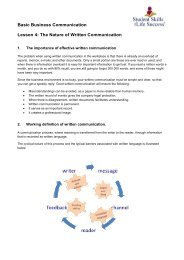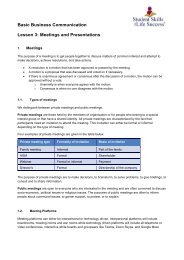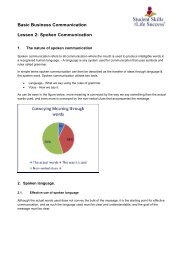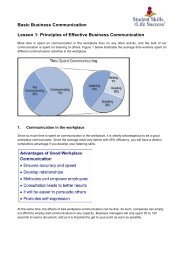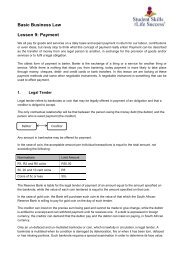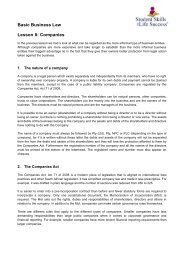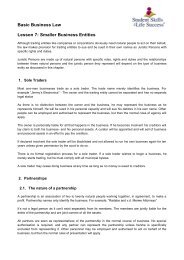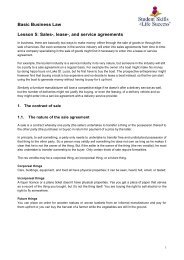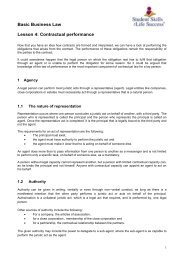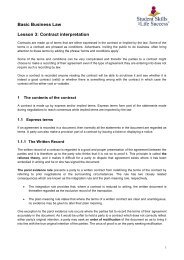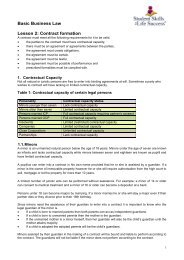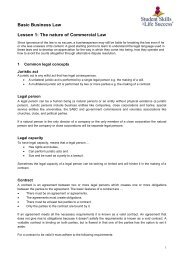Purchasing and Financing 2024
Purchasing- and Financial Management For 2nd year CATS learners. Aligned to the outcomes of the German accredited certification: “Industrie Kaufmann/frau”.
Purchasing- and Financial Management
For 2nd year CATS learners.
Aligned to the outcomes of the German accredited certification: “Industrie Kaufmann/frau”.
You also want an ePaper? Increase the reach of your titles
YUMPU automatically turns print PDFs into web optimized ePapers that Google loves.
6. CREDITWORTHINESS<br />
Students underst<strong>and</strong> the importance of a good credit rating.<br />
Before a loan is approved the creditworthiness of the applicant will be judged. A customer<br />
desiring a loan from his bank makes a loan application after a preliminary verbal<br />
discussion. Many financial institutions use a printed application form with a list of<br />
questions for this purpose. The bank checks the information supplied by the applicant <strong>and</strong><br />
builds up an overall picture of his personal creditworthiness <strong>and</strong> his ability to repay the<br />
loan.<br />
Personal creditworthiness is awarded when the borrower is a reliable person of good<br />
character, hardworking <strong>and</strong> diligent in his job. The ability to pay the loan is set by the<br />
prescribed financial background, from which a level of credit is assessed.<br />
The following methods are used to evaluate creditworthiness:<br />
Obtaining Information<br />
Information about the customer is obtained mainly from credit rating offices (credit<br />
bureaus). They rely on information <strong>and</strong> data from their own sources (agents) as well as on<br />
information provided by suppliers. In granting loans to private individuals, the bank<br />
generally also makes use of a credit rating office.<br />
The bank can go further, with due discretion <strong>and</strong> circumspection, in making use of<br />
references from business acquaintances of the loan applicant. Information is further<br />
provided by trade organizations <strong>and</strong> associations <strong>and</strong> is also exchanged between banks.<br />
Examination of public registers<br />
Important conclusions concerning the financial situation <strong>and</strong> the legal relationships of the<br />
customer can be found in, for example, the l<strong>and</strong> register, the company register <strong>and</strong> the<br />
property register. In many cases attested certificates <strong>and</strong> statements will be required of<br />
the customer. For acceptance loans, the (non-public) list of bills protested is essential.<br />
Examination of the bank account<br />
In most cases the borrower has been a customer (by maintaining a bank account with that<br />
bank). The turnover in his account allows conclusions to be drawn concerning the type<br />
<strong>and</strong> scope of his transactions <strong>and</strong> his payment history.<br />
Visiting the company<br />
If the borrower runs a business, this provides an overall impression of the state of the<br />
business <strong>and</strong> of his organization. The important points for a bank are the value of the<br />
stock <strong>and</strong> machinery.<br />
35




